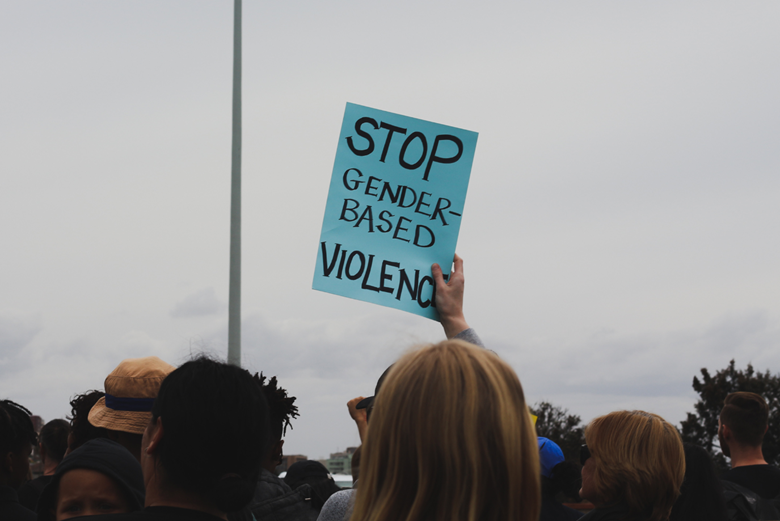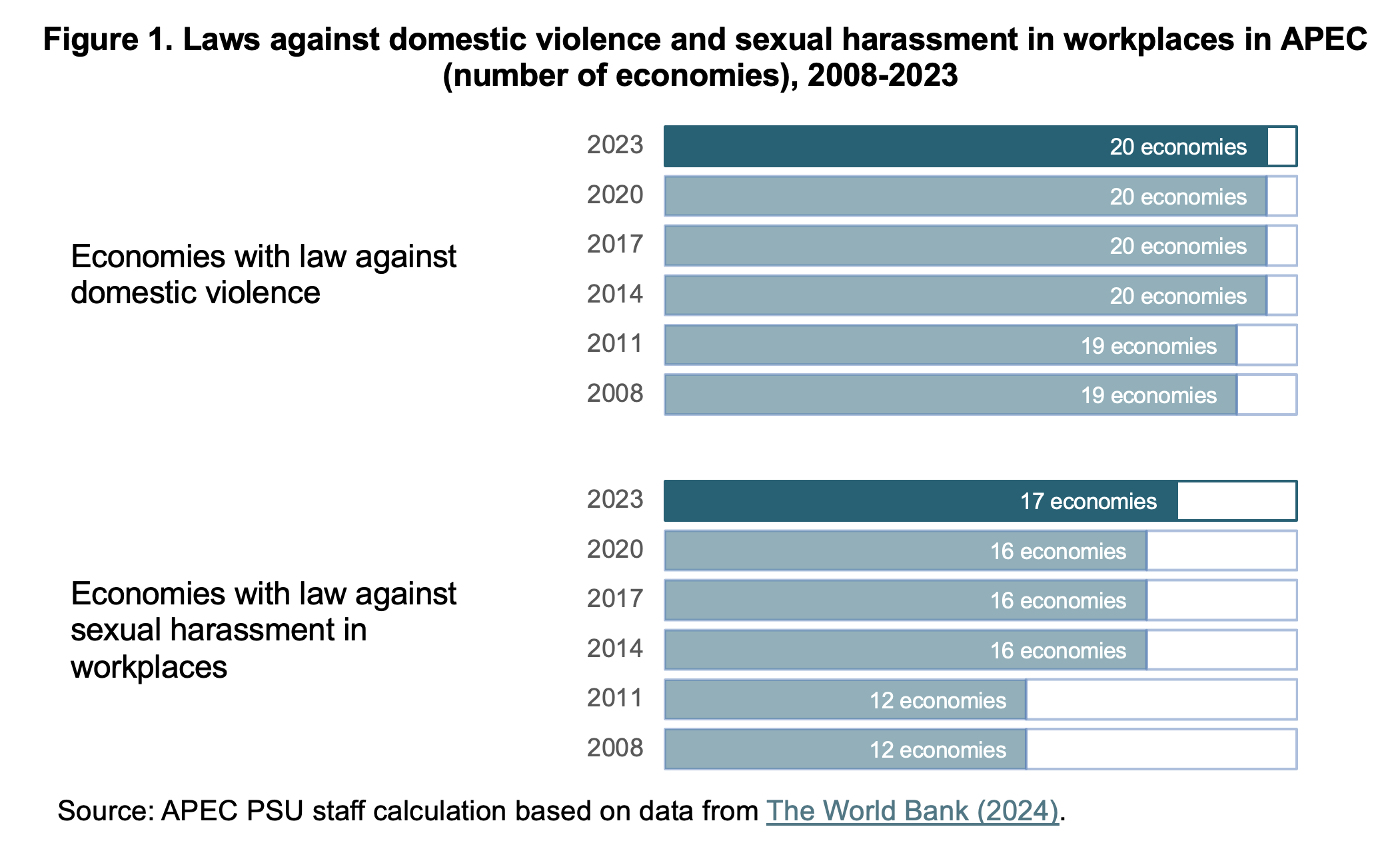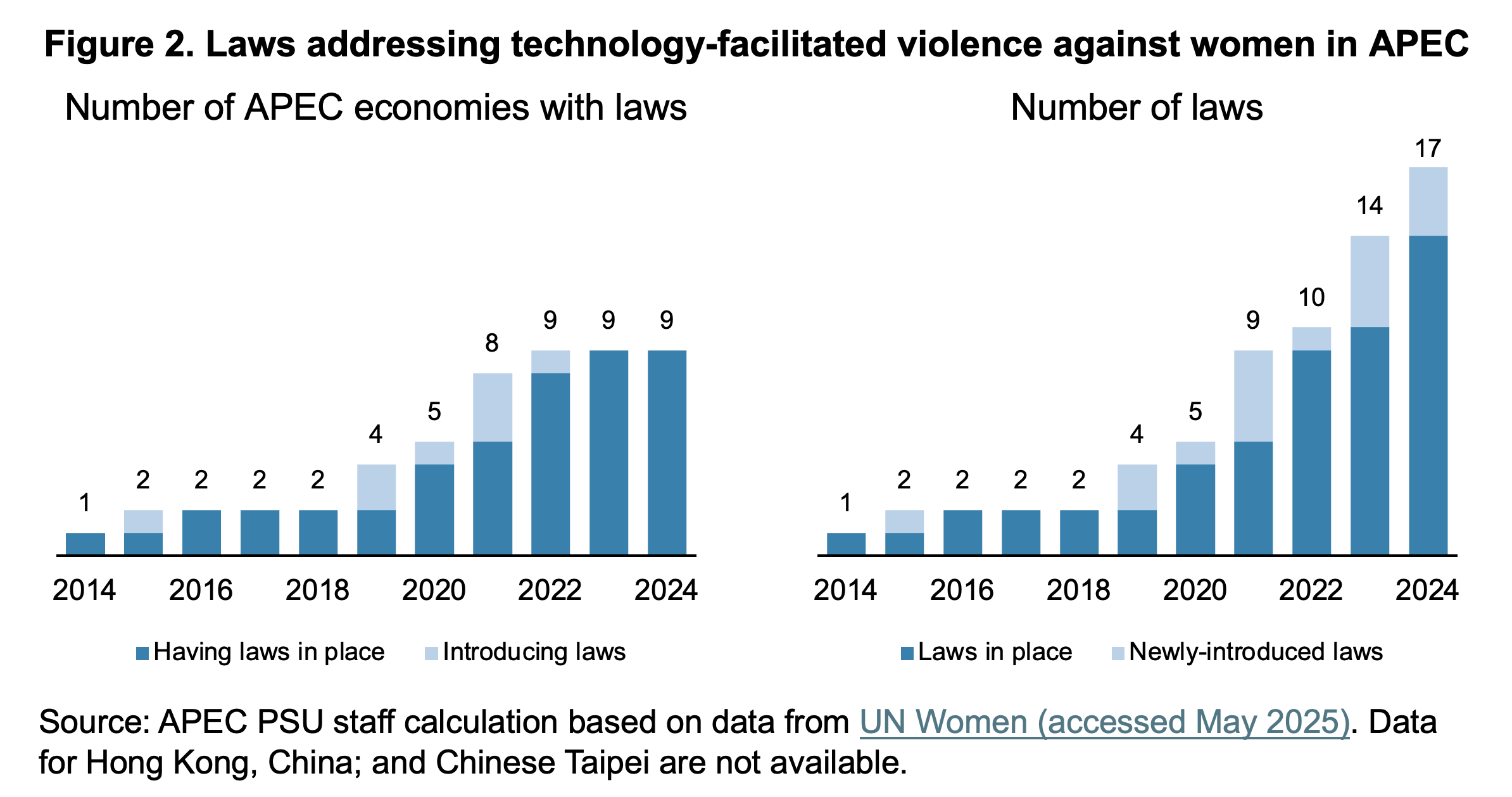Violence Against Women: An Overlooked Economic Barrier

As the APEC Women and the Economy Dashboard marks its 10th anniversary, it reveals a troubling truth: while women have made strides in accessing financial services and digital technology, systemic gender-based violence remains a silent barrier to their full economic participation.
One in three women worldwide have suffered physical or sexual violence at least once in their lifetime, a staggering statistic that underscores a persistent, global crisis. Violence is not just a social issue; it is a profound economic barrier.
Despite notable gains in education, access to finance, and digital inclusion, violence against women—both online and offline—continues to severely limit their economic potential, productivity, and participation across APEC economies. This violence is rooted in social norms and often reinforced by weak legal enforcement. It limits women’s ability to lead, earn and innovate, and it holds back inclusive growth for everyone.
The Hidden Price Tag of Violence
Violence against women is a crisis that ripples through every aspect of society. It is a public health emergency, a governance failure and an economic issue. UN Women estimates that 736 million women worldwide, nearly 1 in 3 women globally, have ever suffered physical and/or sexual violence. Yet, many never report it; less than 40 percent of women seek help, and fewer than 10 percent go to the police.
Why? Because trust in institutions is low, services are limited, social stigma is high, and the fear of retaliation is real.
The 2025 Dashboard shows that even though more than 80 percent of APEC economies have laws against domestic violence and workplace harassment (Figure 1), enforcement remains weak. Without consistent implementation, these laws risk becoming symbolic gestures rather than offering real protection to those they are meant to serve.

The economic toll of violence is staggering. Women who face violence are more likely to miss work, underperform, or leave the workforce entirely. They are less likely to start a business, speak up in public forums, engage in leadership roles, or pursue technical fields. That is a massive loss on talent and productivity.
Some estimates indicate that intimate partner violence alone can cost an economy up to 2 percent of its GDP. And even this figure is likely an underestimate given widespread underreporting and significant data gaps masking the full cost.
Yet progress is possible. Economies with domestic violence legislation report significantly lower rates of intimate partner violence—9.5 percent compared to 16.1 percent in those without such laws—demonstrating that when laws are enacted and enforced, they save lives.
Missed Potential: How Violence Curtails Progress
The 2025 Dashboard reveals a persistent gap. Despite near gender parity in education and literacy, women remain significantly underrepresented in technical and vocational training, Science, Technology, Engineering, and Mathematics (STEM) fields, and leadership roles.
Labor force participation among women remains below 60 percent, with only minimal recovery since the COVID-19 pandemic.
What’s holding progress back? Because women’s time, safety and confidence to participate in the economy are continually eroded by the unequal burden of unpaid care and the threat of violence.
Deep-rooted social norms and weak enforcement of laws discourage women from reporting abuse, while underinvestment in care infrastructure pushes women further into unpaid labor, limiting their ability to advance professionally.
Leadership statistics tells a similar story. For instance, women hold just 22 percent of ministerial positions and 27.5 percent of parliamentary seats in the APEC region, highlighting the interplay of violence and discrimination that keeps women from positions of power and influence.
Violence is a key driver of exclusion. A global study found that 82 percent of women parliamentarians experienced psychological violence during their term. Nearly half received threats of any kind—often via social media—and 65 percent suffered sexist remarks from male colleagues.
Any form of abuse endangers individuals and silences them. And in institutions where women remain underrepresented, especially in politics, policing and the judiciary, laws protecting against violence are often poorly enforced, if enacted at all
Research shows that female legislators are more likely to propose and champion laws on gender-based violence, sexual and reproductive health, and equal rights. When women are not at the table, vital perspectives on safety, justice, and caregiving are left out of policymaking.
Increasing women’s political leadership is not just a matter of representation—it is essential for effective and inclusive governance. It leads to stronger legal protections, better enforcement, and greater accountability in the fight to end violence against women.
Online Violence: The New Barrier to Economic Inclusion
As more economic activity shifts online, digital safety has become a prerequisite for participation. Unfortunately, technology-facilitated violence, abuse and harassment is escalating at an alarming rate.
Globally, about 85 percent of women have encountered some form of online violence. Younger women are particularly vulnerable, with nearly half having experienced it personally. Common tactics include misinformation and defamation, cyber-harassment, hate speech, impersonation, stalking, and hacking. Despite its prevalence, only nine APEC economies have laws specifically addressing online violence as of 2024 (Figure 2).

The economic implications are profound. If women cannot safely engage in digital spaces, their ability to access e-commerce, remote work, digital banking, or startup ecosystems is curtailed—undermining their inclusion in the very sectors shaping future growth.
The Way Forward: Turning Commitments into Action
The APEC region has laid important groundwork, most notably through the La Serena Roadmap for Women and Inclusive Growth, which remains a cornerstone of APEC’s gender inclusion strategy. However, progress demands immediate action. Breaking the cycle of violence and unleashing women's full economic power necessitate bold, coordinated action across several fronts:
- Strengthen legal protections: Enforce laws against all forms of violence, including online harassment, and close legal gaps in employment discrimination and workplace safety.
- Invest in care infrastructure: Reduce the unpaid burden on women by expanding access to childcare, eldercare, and social safety nets.
- Build leadership pipelines: Scale-up mentorship, networking, and training programs that prepare women for decision-making roles.
- Close the data gap: Collect disaggregated data on violence, unpaid work, and women's participation in STEM and entrepreneurship to drive evidence-based policymaking.
- Combat harmful norms: Engage communities, educators, and media to reshape social attitudes that normalize gender-based violence and limit women’s potential.
A Collective Opportunity for Growth
Violence against women is not an isolated issue. It is a systemic barrier to growth, interconnected with wage inequality, leadership disparities, and underrepresentation in innovation. It prevents economies from tapping into half of their talent pool, translating into significant productivity losses and economic costs.
Ending violence against women is not just about justice—it is about unlocking opportunities. A safe woman is an educated woman, a productive worker, a confident entrepreneur, and a transformative leader.
For APEC economies to achieve inclusive growth, they must treat safety as an economic priority. This includes dismantling the structures that allow violence to persist. Indeed, when half of the population is unsafe, no one’s potential is truly protected.
Rhea Crisologo Hernando is analyst and Eldo Malba Simanjuntak is researcher at the APEC Policy Support Unit.
To read the 2025 APEC Women and the Economy Dashboard, visit this link.

